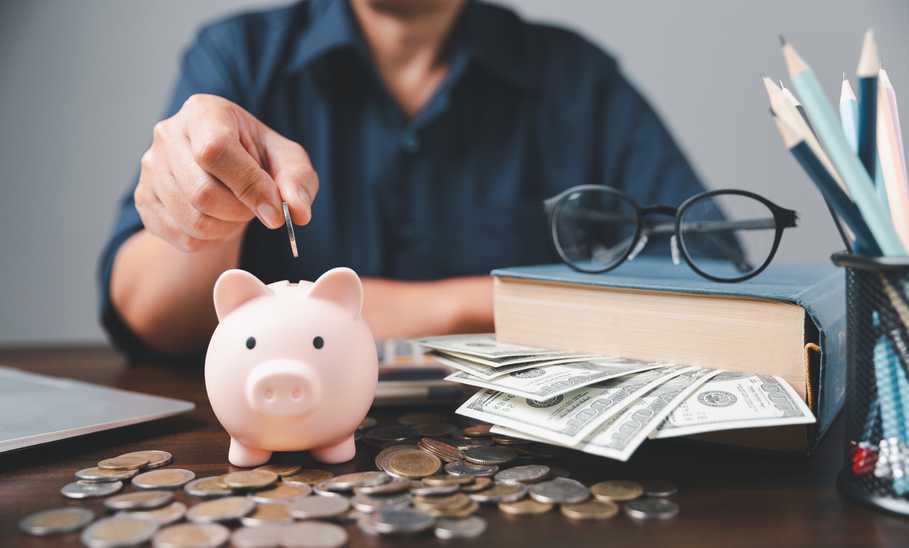Loans come in two primary flavors: secured and unsecured. But the difference has nothing to do with their safety level—at least for the borrower. Unlike secured loans, unsecured loans are not backed up—or “secured”—by a piece of physical collateral, like a house or a car.
But how, exactly, do unsecured loans work? And what are the differences between the various unsecured loans available in today’s market? Perhaps most importantly, is taking out an unsecured loan a smart financial move? We dive into all that and more below.
How do unsecured loans work?
There are various unsecured loans available today, from personal loans to student loans and beyond. (Even unsecured credit cards and lines of credit can be considered unsecured loans.) For this article, we’ll focus on unsecured installment loans—the most common type you’ll encounter if you’re looking to take out a personal loan.
With an unsecured installment loan, the borrower receives a lump sum when the loan is advanced. These days, the amount—which may be as low as $1,000 or as high as $100,000 or more—is often directly deposited into your bank account, so you don’t even have to worry about depositing or cashing a check.
You must repay the loan, plus interest, in regular monthly payments over the predetermined loan period. This period may be only a few months, or as long as five or seven years, and is also known as the loan’s “term.”
Your loan servicer may also charge additional fees, such as a loan origination fee, late fees for late payments, or early repayment penalty fees. Not all lenders charge these fees, so before you apply, read the lender’s fee schedule in-depth (and avoid lenders who slip in these extra charges).
It’s also worth examining the full amortization of the loan, including interest, to determine the total loan cost over time. Plenty of online calculators can help you do this, and the results can be eye-opening: Depending on your interest rate, you might be back paying almost double the amount you borrowed by the time the loan’s term is complete.
Pros and cons of unsecured loans
Like any other financial decision, taking out an unsecured loan has drawbacks and benefits. Here are some of them at a glance.
Pros:
- Fast funding—the money often hits your account in just a few business days
- No collateral requirement simplifies the application process
- Flexibility: Unsecured loans can be used for just about anything you want and are available in a wide range of amounts and terms
Cons:
- Because they’re riskier for banks, unsecured loans tend to have more stringent qualification requirements
- Higher interest rates than most secured loans
- Missed payments or default can result in credit damage or legal action
Benefits of unsecured loans
Let’s take a closer look at the benefits of unsecured loans.
Fast funding
Personal loans for quick cash are plentiful these days, and in most cases, you can complete the entire application process without ever leaving your home. All you need to do is submit the online application, including any documentation the institution asks you to upload (such as pay stubs, tax returns, and identification). Once your loan application is accepted and approved, you can have the funds in your account within a few business days.
Simple application process
Along with the simplicity of online applications, unsecured loans benefit from not requiring collateral. All collateral-related paperwork you’d otherwise need in a secured loan—like a title, lien, or home inspection report—is unnecessary for an unsecured personal loan.
Flexibility
One of the most attractive features of unsecured personal loans is their flexibility: Barring illegal activities, the funds can be used for just about anything. Some people use personal loans to get a leg up on financial goals, like getting out of debt (debt consolidation), while others might take out a personal loan to fund a large expense, such as a wedding or overseas vacation. Remember that while you can borrow for these life events, it doesn’t mean it’s a good idea.
Risks of unsecured loans
Let’s take a closer look at the risks and drawbacks of these loans.
Harder to qualify for
Unsecured loans are more risky for the lender. All they have is your good word that you’ll pay them back, which is why unsecured loans are sometimes called “good faith loans” or “signature loans.”
Of course, banks are businesses, and good faith won’t move the bottom line, so lenders tend to have higher qualification requirements for unsecured loan products than secured ones. In short, your credit history, income stability, and other factors will likely need to be in pretty good shape to qualify for, let alone score favorable terms on, an unsecured loan.
Higher interest
Even those with excellent credit scores may find that unsecured loans have higher interest rates than secured loans, regardless of other similarities, such as loan amount or term.
For example, TIME found that the average unsecured personal loan interest rate ranged from approximately 10.73% APR to 12.5% APR for those with credit scores of 720 or higher, while those with credit scores of 630 or lower see average rates from 17.8% to a staggering 32%.
Compared to the average auto loan rate on a new car—according to 2023 data from Experian—the average auto loan rate is only 14.08% APR even for borrowers with credit scores between 300 and 500. With excellent credit, new car loans can be taken out at an average interest rate of just 5.18%. In short, collateral can help dial down the overall interest rate.
Risk of credit harm, legal action
The vast majority of loans and lines of credit come with some risk to your credit score and credit history if you fail to pay them in full or on time. Unsecured loans are no different—and under certain circumstances (non-payment for several months, otherwise known as default), lenders may also take legal action against you to get their money back.
Fortunately, there’s no such thing as debtors’ prison in the U.S. anymore, but these proceedings can, of course, be deeply disruptive and expensive (not to mention having a lasting impact on your credit history and ability to secure other loans in the future). Those who default on student loans, specifically, also risk having their wages garnished.
Types of unsecured loans
There is a wide variety of unsecured loan types available in today’s market, and knowing the differences between them can help you make smart financial decisions about which type, if any, is right for you.
Personal loans
Personal loans are unsecured loans that can be used for any purpose, such as home improvement, to cover unexpected medical bills, or to fund a vacation.
Some vendors market their personal loans under various subtypes to attract audiences looking for money for specific uses, so you may see “home improvement loans,” “family planning loans,” “travel loans,” “medical loans,” and “wedding loans” offered by lending institutions.
However, in most cases, these are unsecured, personal installment loans that all work the same way. (Of course, it’s always worth double-checking with the vendor to ensure there aren’t any use restrictions or other fine print details on the loan you’re considering.)
Finally, there is a predatory type of unsecured personal loan to look out for: Payday loans. These are short-term loans (usually due, as their name implies, on your next payday) offered in smaller amounts but at very high interest rates.
For example, you might take out a payday loan to cover a $400 emergency but pay another $120 in interest (i.e., a total of $520) when it comes due two weeks later, for an effective interest rate of 300%.
Most financial experts generally consider payday loans predatory and worth avoiding.
Student loans
Student loans are unsecured loans. Fortunately, they are often available at lower overall interest rates than other types of unsecured personal loans, especially student loans procured through the federal government.
Some of these government student loans are also subsidized. This means that the U.S. Department of Education will pay the interest on the loan while you’re actively enrolled in school at least part-time, for the six-month grace period after you leave school, and during periods of deferment.
Credit cards and lines of credit
Although they work differently than the installment loans covered in this article, unsecured credit cards and lines of credit are also a form of unsecured loan—although their structure is different.
That is, instead of getting a lump sum upfront, you open a line of credit up to a predetermined limit. You’re then expected to repay what you borrow monthly, and interest is charged on any revolving balance you accrue.
What are the requirements for unsecured loans?
As mentioned, unsecured loans often have more stringent qualifying criteria than secured loans do. Still, many borrowers qualify. While each lender is different, here are some common unsecured personal loan requirements.
Sufficient credit score
Yes, that three-digit score matters greatly when taking out an unsecured personal loan (or any kind of loan), though even those with less-than-perfect credit can usually find a loan that works for them.
Still, the higher your credit score, the more likely you are to qualify for better loan terms (including a lower interest rate), so bringing up your score before applying for a personal loan, may be worth it.
Income and job stability
Along with your credit history, lenders are also interested in your ability to repay the loan—which depends, in most cases, on your income. That’s why many lenders will ask for employment verification for up to two years as part of your loan application process, in addition to considering your overall income level.
Reasonable debt-to-income ratio (DTI)
If you’ve already got some revolving debt, lenders will consider that before offering you another loan. After all, your payments on existing debt reduce how much you can afford to repay a new loan each month. Your debt-to-income (DTI) ratio represents your monthly debt as a percentage of your monthly gross income.
Personal loan lenders usually prefer a DTI of 35% or less, though some may require a DTI of 40%.
How to apply for an unsecured loan
Applying for an unsecured loan has never been easier than it is today. All the steps can be done from your personal computer—or, in some cases, even your smartphone. Following the lender’s step-by-step guidance, you may be able to complete your application in just a few minutes; the biggest delay, realistically, may simply be in locating your tax return or other required verification documentation.
The most important step might occur before the application: the research phase. Because so many online loans are available (and because interest rates and terms can vary significantly) it’s well worth taking some extra time to shop around for the best deal and a lender whose products are designed with your needs in mind.
What is the difference between a secured loan and an unsecured loan?
As mentioned above, the difference between a secured and an unsecured loan is collateral. Secured loans require you to offer up a tangible asset that the bank can fall back on if you don’t repay your loan. These days, that property is most commonly a home or a car, though secured credit cards will take cash upfront as collateral.
Alternatives to unsecured loans to borrow money
While personal loans can get you the cash you need—and fast—they’re not the only way to secure extra cash in a pinch. In fact, the alternatives could cost less in the long run. Here are some other ways to borrow money.
Secured loans or lines of credit
Secured loans, credit cards, or lines of credit are another option if you have collateral to offer, such as a vehicle, a home, or cash. Many who are trying to rebuild their credit will find it worthwhile to provide cash upfront for a secured credit card.
Family loans
We’re not suggesting you run to your rich uncle for every financial need that crops up—but if someone in your family is willing to lend you money, it may be a less expensive option than going to the bank.
For best results, we recommend drafting a contract with your family member detailing any required interest or late fees to avoid an unpleasant emotional fallout. Relationally, family loans can be just as risky as any other.
Retirement account loans
Depending on the type of retirement account you have (common ones include 401(k)s, 403(b)s, and IRAs) and your purpose for borrowing, you may be able to take a loan against your retirement savings to help meet a short-term financial need.
For example, an exemption clause allows qualified first-time homebuyers to withdraw up to $10,000 from their IRA to help with associated expenses, though this doesn’t hold for 401(k)s.
Remember that there may be an opportunity cost from missed compound interest on the funds you withdraw. Plus, most retirement accounts have restrictions that make it more difficult to obtain the money before you reach retirement age without paying steep penalties. Check with your retirement account custodian for full details.
Salary or cash advances
Instead of borrowing money you’ll owe later, you may be able to borrow money you’ve already made (but have yet to receive): Salary and cash advances give you access to money from your next paycheck now, which can be a great help for making ends meet in the short term.
You may be able to ask for a salary advance directly from your workplace or utilize cash advance apps that facilitate this process. Some apps charge fees for monthly subscription services or express delivery of your funding.
Cash-out mortgage refinancing or home equity lines of credit (HELOCs)
Finally, if you already own your home, you may be able to leverage the value of your equity to get some fast cash in the short term. Some mortgage refinancing options offer the opportunity to take out liquid cash—though you’ll end up with a larger mortgage that may take more time to repay.
Home equity lines of credit (HELOCs) work in a similar way, but they offer a line of credit rather than a lump sum of cash. HELOCs have lower rates than unsecured personal loans, and the interest may be tax deductible.
TIME Stamp: Unsecured loans are a flexible way to borrow but interest rates can be high
Unsecured personal loans offer a flexible and fast way to access cash for just about any purpose—but their higher interest rates and stringent qualifying criteria may discourage some borrowers. Fortunately, alternatives are available.
Frequently asked questions (FAQs)
Is an unsecured loan good or bad?
As is true of almost all financial products, unsecured loans are not categorically good or bad. It’s all about how you use them. For example, if you take out an unsecured loan to make progress on a home remodeling project that adds to your property value, it might be a net positive for your finances.
Even with an unexpected medical bill, taking out an unsecured personal loan might be better than going into credit card debt. However, unsecured loans can have high interest rates, and certain types of unsecured loans, like payday loans, can be predatory in nature.
Which loan is better, secured or unsecured?
While both secured and unsecured loans are debt, secured loans are generally easier to qualify for and have lower interest rates. That’s because they are less risky for the lender. Of course, secured loans carry a risk for the borrower: If you fail to repay, you might have your home foreclosed or your car repossessed.
Can bankruptcy eliminate all unsecured loans?
Yes, but it depends on the type of bankruptcy. Debtors who file for Chapter 7 bankruptcy can eliminate all their unsecured loans, though the process will take several months to complete.
Those who file for Chapter 13 bankruptcy cannot; however, Chapter 13 allows the borrower to keep some of their assets, which may make recovery easier in the long term.





